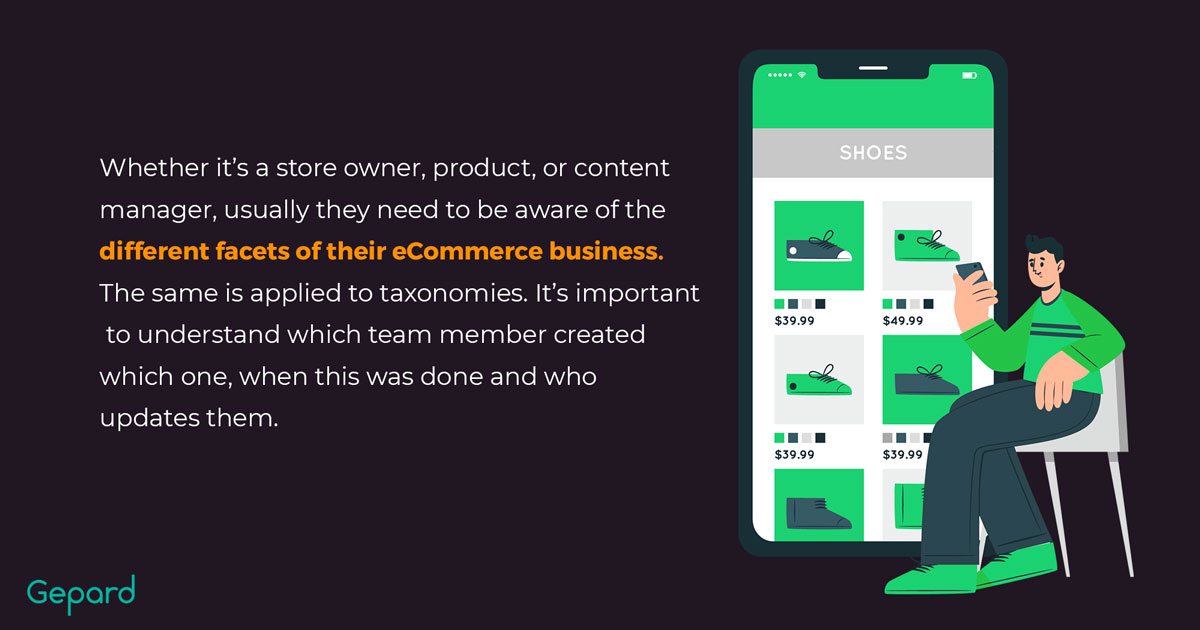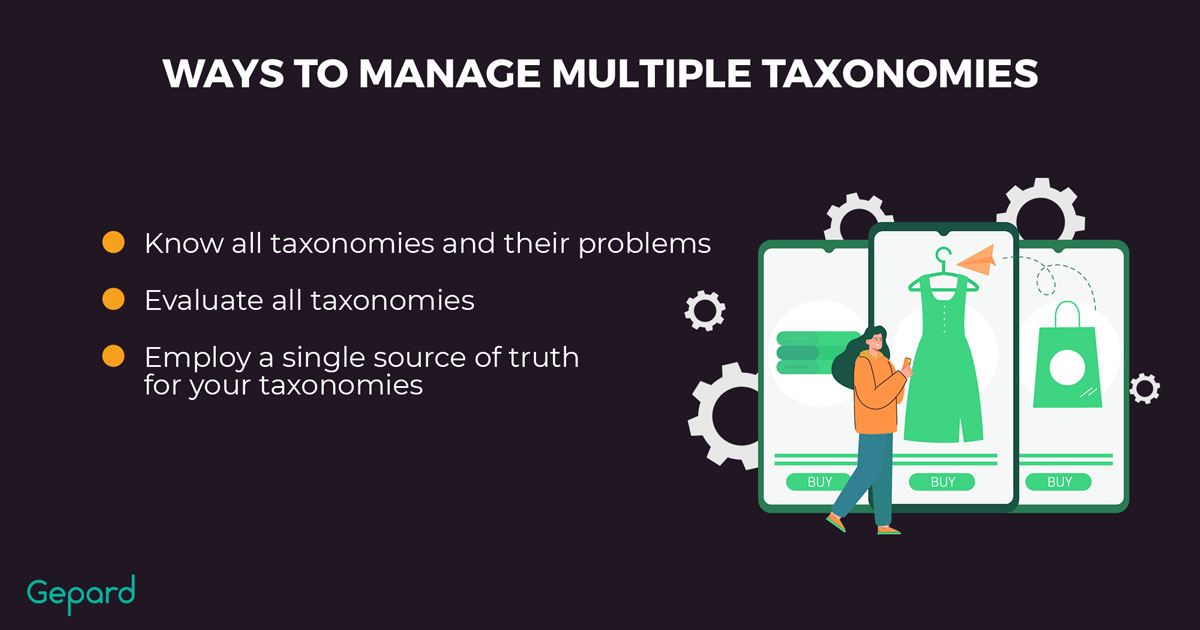Employ Multiple Product Taxonomies: The Key To eCommerce Success
Taxonomies are often the aspect of an eCommerce business that gets overlooked. However, this is an element that holds the key to a successful shopping experience for the user and ultimately your online store being profitable. Let’s unpack how organized and structured product categories drive better results.
What Is Multi Taxonomy?
Examples Of Different Taxonomies
Depending on the inventory’s complexity, the range of products offered, and the typical buyer’s profile, online retailers chose different approaches how to structure the taxonomy. Let’s take two examples and examine the different approaches.
The first example is from an online shop of the Swedish-originated global furniture manufacturer and retailer IKEA. The company has hundreds, if not more, of items and subcategories for them. With that in mind, the sidebar menu with the product list is broken down into clear categories that help the user quickly find what they are looking for. As an example, if selecting “furniture”, an additional list will appear with more specific subcategories, such as “tables & desks”. Once that is selected for a better user experience, the visitor is taken to a separate landing page where further subcategories can be found. If a new side window extension appeared listing the type of tables this could potentially overwhelm the visitor and cause an abandoned session.

The second taxonomy example is that of the US eCommerce company iHerb. Just like IKEA, the company has a large selection of products but they can all be listed in just seven main categories and a lot of other subcategories that are structured in alphabetical order. Once one is selected the user is taken to a page where further filtering can be done according to various attributes such as price, size, brand name, and so on. The method of a dropdown menu with a structured list quickly lays everything out and is easy to navigate.

What Is A High-Quality Taxonomy?
For sure, this question leaves a lot of space for discussion, however, the major criteria can be the following ones below.
1. Logical Structure With Consideration Of Stakeholders’ Requirements And Buyers’ Needs
The ability to grasp the target audience for your product is a crucial part that will make sure that marketing campaigns pay off or at least reach the right person. The internal stakeholders of a business might have various goals and requirements, so it is important to find a consensus on the part where all the internal users are involved (product managers, marketing and onboarding teams, etc).
The same concept can be applied when structuring product taxonomy for your eCommerce customers. Understanding who will be the person visiting your online store and what are their needs should be the driving factors that help decide how to go about the structure.
2. Incorporated Into The Organization’s Product Data Governance Framework
Every company has its own procedures related to the way it handles data and on top of that also follows its regional regulations. This means that high-quality taxonomy is determined not only by how well things are visualized but also by what the backend side of things looks like.
3. Taking Into Account The Best UX Practices
No matter how well organized the arrangement of your inventory is, it all comes down to how well it is presented and the experience a user has from interacting with it. If the text font or color is of bad readability if the page is not responsive and doesn’t appear on all devices as it should then it’s not worth much. UX best practices always come first.
4. Ready For Advanced Search Engine Requirements
Most traffic that online retailers get is generated from search engine results. This is simply how people look for products, they Google them and if something is not displayed advanced search comes into play. This is why it’s important that the product data set meets the requirements that search engines need in order to properly group, categorize, and show results that feature items sold in your online store.

Why Use Multiple Taxonomies?
Most online retailers don’t just sell items that belong to one product category or even a few. This means a multi taxonomy needs to be taken as a solution to the accurate listing.
When a user visits a website with the intent to buy, he or she will go through decision-making possess. This means that product taxonomy needs to be one of the elements that will positively help in that process.
As with the IKEA example, the company has a furniture category and from there fifteen subcategories of chairs. The way they are presented and arranged is not done randomly. This is achieved through A/B testing, trial and error, and seeing what needs to be optimized to get the best results.
But of course, product taxonomy is not just good systematic categorization. It’s also how easy it is for the user to navigate and for the online store to change the way products are organized. For example, the online cosmetics store MakeUp has a unique product classification in their navigation bar that is not just the standard “For Men, For Women, Gifts, etc”. The company arranges items by body parts and from there to more relevant products. If a visitor selects “Face” from there they can select “Lip Care”, “Eye Care” or “Anti-Aging” products, and so on. Furthermore, if a customer logs in to their account the product categorization changes to a more specific order that relates to what already has been viewed, or purchased in the past.
The detail level can even go further, for example, an online store sells vintage vinyl records. This would require the data sets related to the product to be classified by multiple facets. All of the items will have to be organized and displayed by artist name, genre, release date, country, and so on. The more detailed the better access to the right information the user has.

Additionally, having multiple taxonomies can be helpful in boosting sales and personalizing the shopping experience. This can be done by displaying different information to users based on their geo-location. Let’s say that it is the middle of July and we have user A who is located in Croatia and user B in Australia, both of them are browsing the same clothing shop. Their geolocation is picked up by the system and the taxonomy is adjusted accordingly. For user A the hierarchy of the listings will be summer clothing first since it’s 33°C outside and for user B it will be winter clothing first since it’s 5°C and raining most of the month.
Multiple taxonomies are important for a refined user experience, generating additional revenue and in some scenarios even for better data collection. However, managing them can be a hassle. The good news is that the presence of several taxonomies is not an issue if a PIM tool is used to store and handle all the product data. A PIM will easily pull the information from several databases and display it in the relevant taxonomy with no hierarchy issues.
How To Manage Multiple Taxonomies?
Any data set usually requires a team to handle it and be responsible for it. When a business has more than one taxonomy, there is usually a few teams that manage them. For that reason, it’s important to have clear steps for the teams to know how to manage the taxonomies.
1. Know All Taxonomies And Their Problems
Whether it’s a store owner, product, or content manager, usually they need to be aware of the different facets of their eCommerce business. The same is applied to taxonomies. It’s important to understand which team member created which one, when this was done and who updates them.
Additionally, there needs to be an understanding of the issues each taxonomy has. Is there one that works better with a particular set of users based on their location or other attributes? Is one less detailed than the other? Does one have a higher rate of abandonment? Answering these types of questions should help not just have an understanding of the issues but how to plan out the consolidation of the information.
2. Evaluate All Taxonomies
Once all of the product categories are categorized and structured in the relevant hierarchy that you selected, the next step is to evaluate them. This means a thorough review of how the data is structured and how it will appear in the interface. Additionally, this involves putting yourself in the buyer’s shoes, going through the selection process of someone shopping for a particular item, and seeing if the way products are mapped out meets the customers’ journey.
3. Employ A Single Source Of Truth For Your Taxonomies
Often the larger an eCommerce business is the more data storing and managing systems it has. This happens for different reasons such as one marketplace supporting only a specific storage service or making users use their native storage, or simply due to the growing nature of a business and a lack of protocol in place. For a product taxonomy, this is simply a nightmare scenario that prevents it from being benign of high quality due to misconfigurations and other countless bugs that occur. The solution is simple: have a single source of truth (SSOT) architecture implemented in your product data governance protocol.

How PIM Software Helps In Managing Multi Taxonomy
All of the methods for managing a specific taxonomy listed above are strong practices that can potentially boost an eCommerce business’s profitability. However, in order to effectively employ all of them, a strong digital tool is needed. This is exactly where a powerful PIM software solution fits.
PIM Solution Enables Taxonomy Management
Companies that are using PIM mainly utilize them as a tool to update, syndicate, and organize product content but it can equally be applied as a tool to manage taxonomies. Thanks to the automation features that product information management software has, automatic categorization and metadata updating are possible. Every team member involved in the process of creating and managing your company’s taxonomy will have access to one source for each data set.
Benefits Of Managing Multiple Taxonomies With PIM
Today an eCommerce business mainly consists of not just selling on one online shop but on several marketplaces. Each of those sales channels has its own taxonomy requirements and not using multiple taxonomies is simply impossible. This fact leads to extra resources being assigned just to keep track of what is listed where and people are prone to making mistakes in such cases.
Using a PIM solution, there is no need for more than one to two people to handle countless taxonomies since everything is stored in one place. But not only does it reduce the number of resources needed to handle them, but there is also no need to bother keeping track of the structural hierarchy. You just update what is required in the PIM and it automatically syndicates the new data across all of the outlets.
Multiple Taxonomies FAQ
What Are The Best Practices For Employing Multiple Product Taxonomies?
Even if a PIM system is a perfect tool that simplifies this process, the basic rules of creating logical product groups similar in their characteristics need to be adhered to. A “parent” category has to have a “child” category that relates to it. All of the names need to be straightforward and conventional rather than artistic or creative which can lead to the user simply not understanding what that category is. On top of that, the structure of the taxonomy has to be designed in such a way that if a new product category is either added or removed only minor changes need to be applied to the “tree” rather than a complete redesign of it.
How To Choose The Best PIM Software To Manage Multi Taxonomy?
When an organization is in the process of selecting a PIM solution there are a few short-term and long-term aspects that need to be considered. One of the first things that need to be understood from the start is how simple is the data onboarding process. After that customization flexibility according to your needs can be reviewed. From there the long-term elements such as the type of integration the PIM supports and how well is it suited for scalability.
Read more about how to choose a proper PIM platform in this 101 guide:
How Gepard PIM Solves These Challenges
As we already established, a dynamic eCommerce business model is one that deals with selling on different marketplaces, apps, online shops, and so on. The more sales platforms there are the bigger the need to generate new taxonomies there is.
With that in mind, it’s never easy to manage a large volume of data sets if you don’t have the right tools to do so. Employing a strong PIM software that eliminates all of these challenges is the sole solution that most profitable online businesses use.
Gepard PIM is exactly the type of solution that helps manage multiple product taxonomies across a variety of channels and is able to consolidate them effectively. And in return, your team gets the extra time that is valuable to focus on other tasks.
Book your demo today to find out how Gepard can be your go-to tailored solution.



